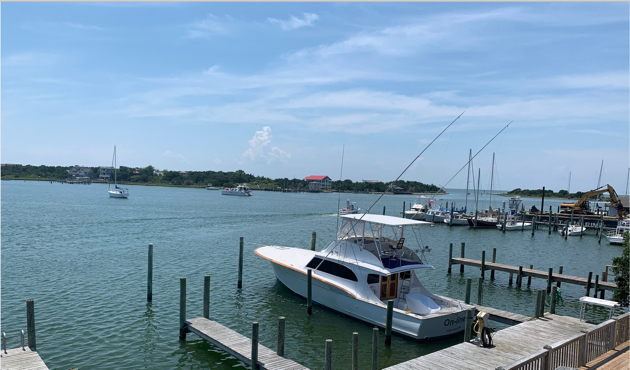I was four miles off Ocracoke Island on a sunset sail, viewing the spot where pirate Black Beard made his last stand. I did not expect to hear the word ‘microgrid.’ But there it was, mixed in among the stories of island lore told by first mate Dave aboard the schooner Windfall II.
Dave, a near life-long resident of the North Carolina island, made clear his pride in the island’s microgrid, a demonstration project that he said made the island an energy leader.
When you find the locals bragging to tourists about — of all things — an energy project, it’s a sure sign of a successful education campaign, one other energy providers might want to take a look at. Credit goes to the local electric cooperative, Tideland Electric Membership Corp and the North Carolina’s Electric Cooperatives.
Dave knew the value of the project. The microgrid is used, he said, for “peak shaving” on hot summer days, part of the island’s energy efficiency program to keep costs in check.
It also can power the storm-prone island’s village when the underwater power cable from the mainland fails.
Dorian devastates island
When a hurricane approaches Ocracoke, the island evacuates its guests (as many as 7,000 per season) via ferries to the mainland, about 25 miles away. But the thousand or so locals are storm hearty folk and tend to stay behind and “hunker down,” Dave said. The hybrid microgrid provides enough power to keep them comfortable should the main grid go down.
I witnessed the island’s energy efficiency program in action during a hot July afternoon when the ecobee thermostat in our rental notified us of a demand response event.
But fortunately, I was not on the island to witness more recent — and traumatic — weather. On September 6, Hurricane Dorian sent a tidal wave over the beautiful Outer Banks island.
Sadly the tourist-based island is now closed for business and many have lost their livelihoods because of the flooding.
Microgrid offers lessons
The microgrid survived the storm and because of it, the local utility cooperative was able to restore electricity to the island even before the transmission connection to the mainland was back up and running.
Too often the adage ‘follow the carnage’ applies to microgrid development, meaning that only after they’ve experienced a disaster do communities install microgrids. But to its credit, Ocracoke had the wisdom to think ahead. And now others will look to its system for lessons about building microgrids to survive storms.
But right now the island has got a lot of cleanup and rebuilding to do. For those who want to help, the Outer Banks Community Foundation has launched a fundraising campaign.
With luck and hard work, the island will recover to once again become a tourist mecca. When it does, the story of Dorian and the microgrid will likely get added to island legend.
To learn more about the island’s microgrid, see Andrew Burger’s article published today on Microgrid Knowledge.


